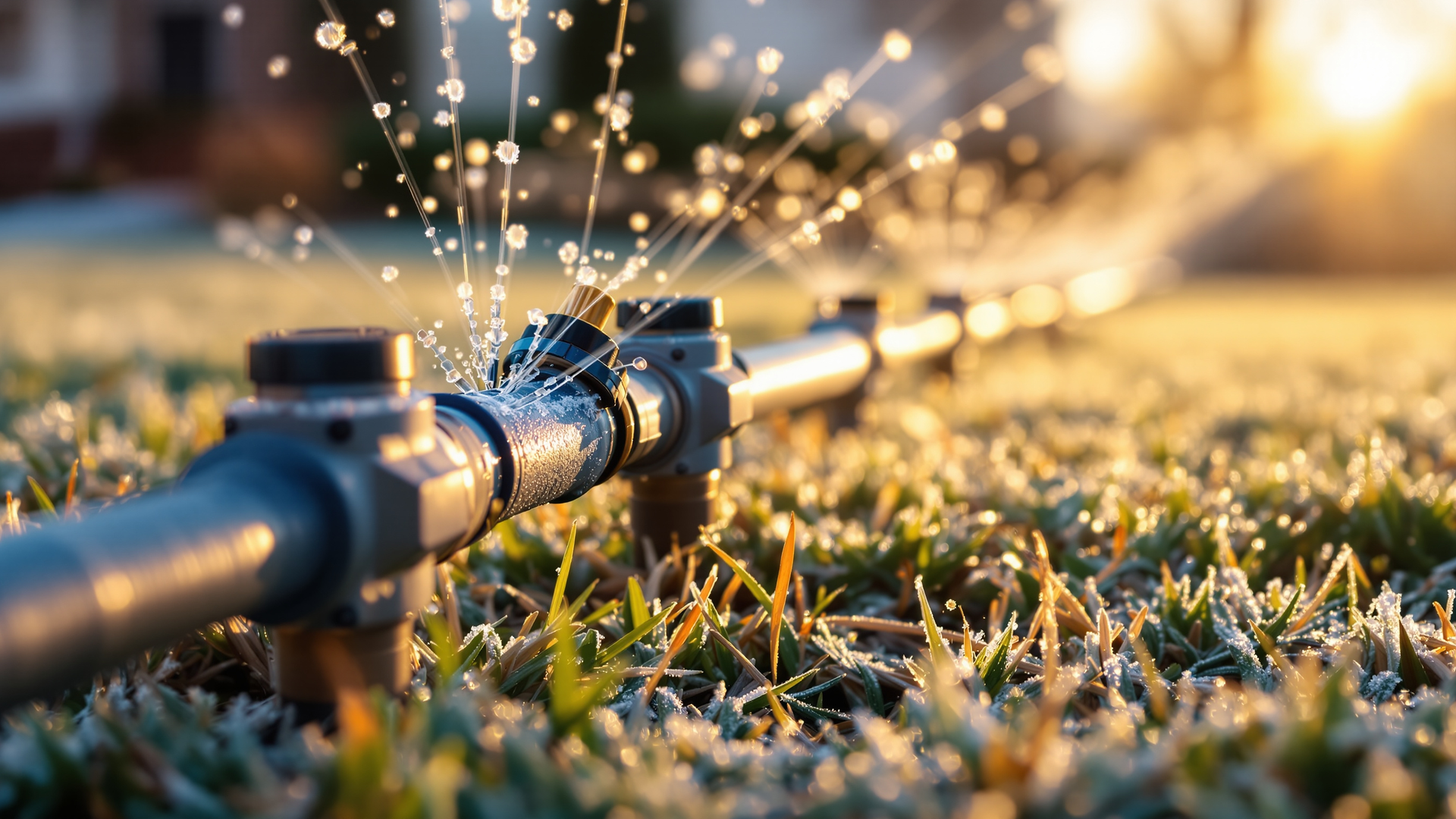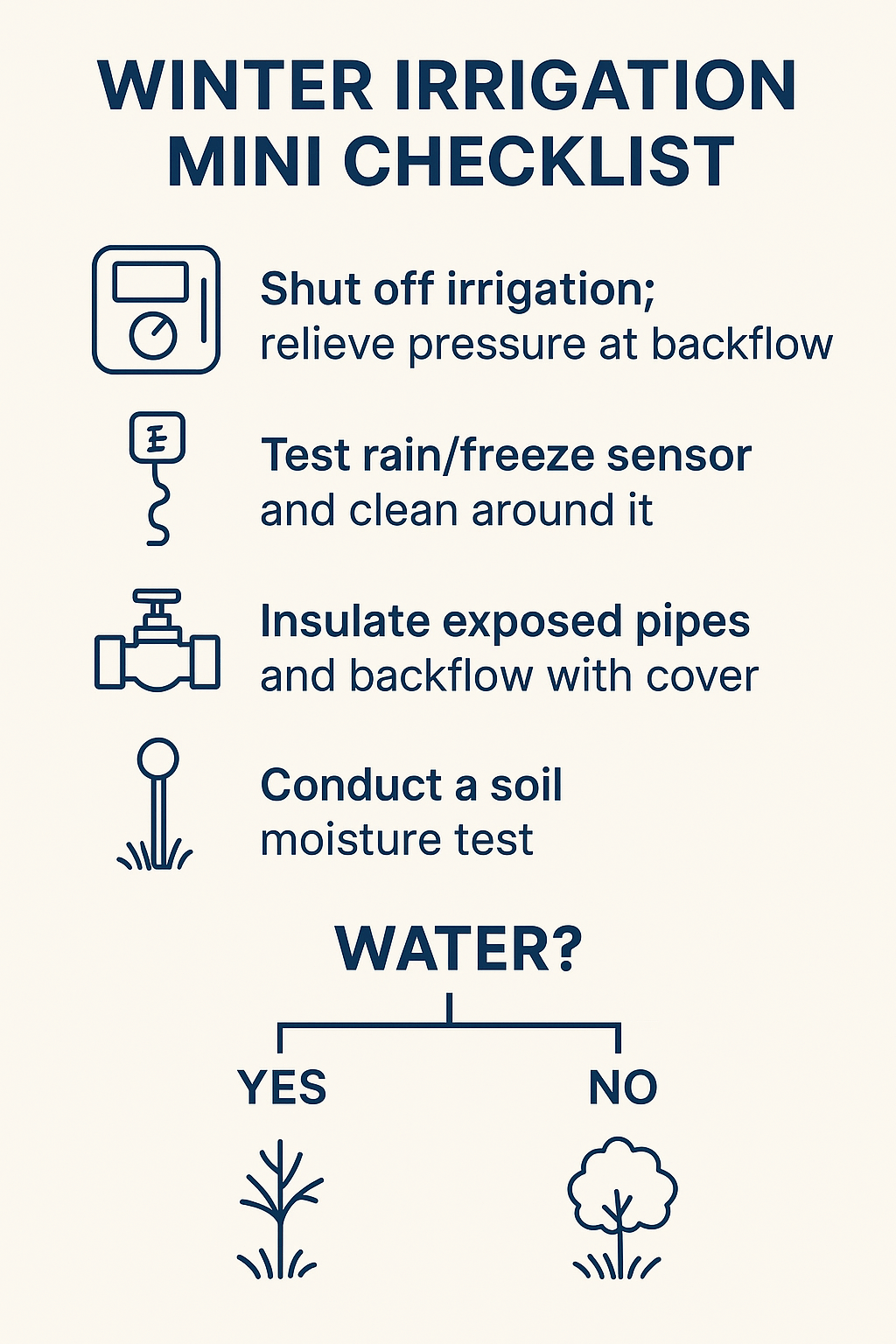
Here are the most common winter irrigation maintenance mistakes: skipping a blowout or drain, leaving the controller on “Auto,” ignoring rain/freeze sensors, failing to shut off or protect the backflow, watering on hard-freeze nights, and neglecting mid-winter inspections. These slip-ups lead to burst pipes, wasted water, and a stressed, patchy lawn.

Summary: Most winter irrigation disasters come down to three simple things—no blowout or drain, water left on at the shutoff or backflow, and controllers left running.
Details: Picture this: first hard freeze of the season, and you hear a faint hiss by the driveway. A tiny split in a lateral line becomes a soggy crater by morning. It almost always traces back to trapped water. If you don’t fully drain or blow out your lines, expansion has nowhere to go except through plastic and PVC.
Summary: Leaving the controller on “Auto” is the sneakiest winter irrigation maintenance mistake. One accidental cycle on a 25°F night can turn your sidewalk into an ice rink.
Details: Most modern controllers have Rain or Standby Mode—use it. If warm spells call for a light watering, run a short, manual cycle during midday only. Have a smart controller? Nudge seasonal adjust to 0% or use a “winter” program that’s off by default.
Summary: Ignoring sensors is like driving without a fuel gauge. You’ll be fine—until you’re not.
Details: A 30–60 rain or rain/freeze sensor pays for itself the first time it prevents a midnight irrigation cycle before a cold front. I’ve seen a single freeze-skip save a HOA from a liability nightmare when a sidewalk iced over. Check that your sensor is clean, not shaded by gutters, and wired or paired correctly.
Pro tips:
Summary: The backflow preventer is your system’s heart valve. If it cracks, you’re looking at an expensive, not-fun replacement.
Details: Uninsulated backflows and open valve boxes are magnets for freeze damage. A simple insulated cover and foam tape on exposed copper or brass can be the difference between a calm morning and a geyser in your front yard.
Do this now:
Summary: Sometimes yes—just not like summer. Overwatering is just as harmful as underwatering when the soil is cold.
Details: Cool-season lawns (fescue, rye, bluegrass) can dry out in windy, sunny winter weather. Warm-season lawns (Bermuda, zoysia, St. Augustine) mostly nap, but still benefit from occasional moisture during extended dry spells to protect roots and soil microbes.
Winter irrigation doesn’t have to be stressful. Avoid the big mistakes—no draining, bad controller settings, ignored sensors—and your lawn will roll into spring without drama. If you want a quick, expert tune-up or a sanity check on your setup, Check Out Turfrain. We’ll button things up now so you can coast till green-up.